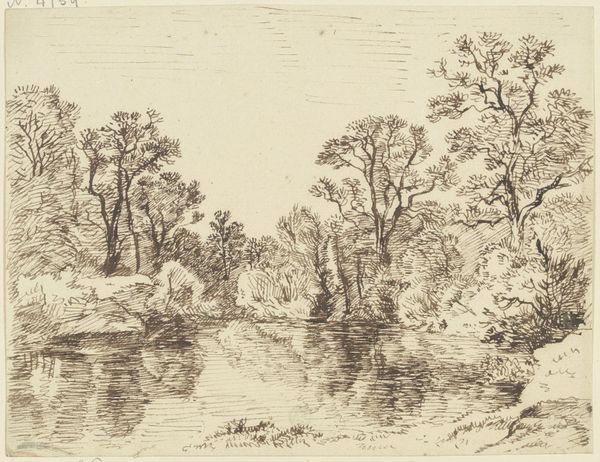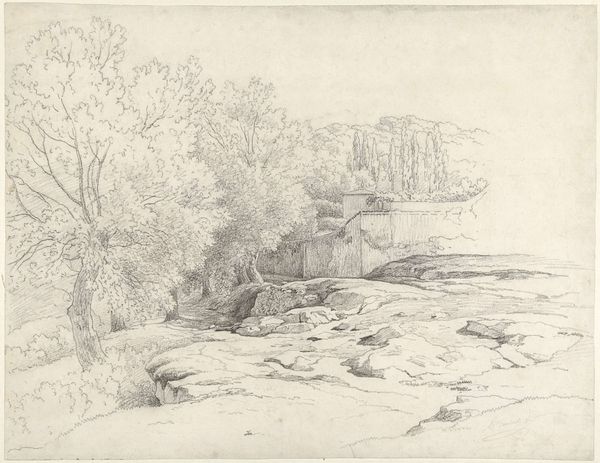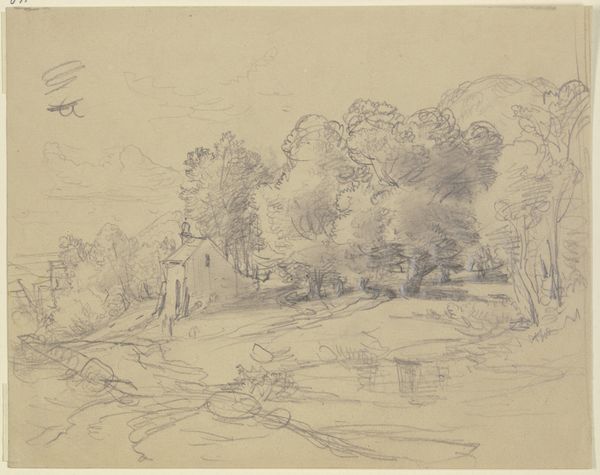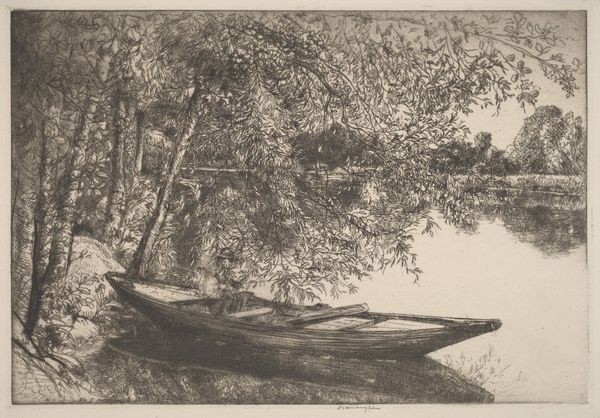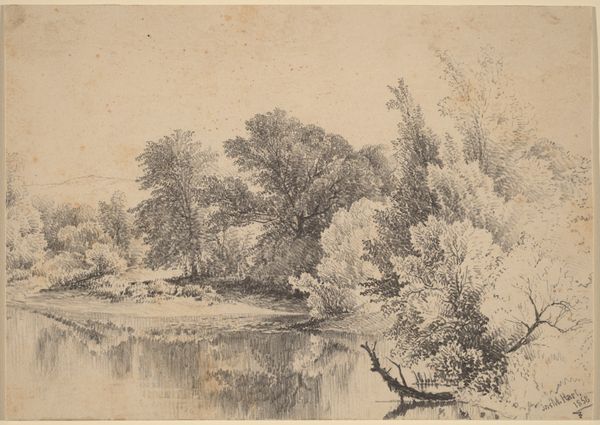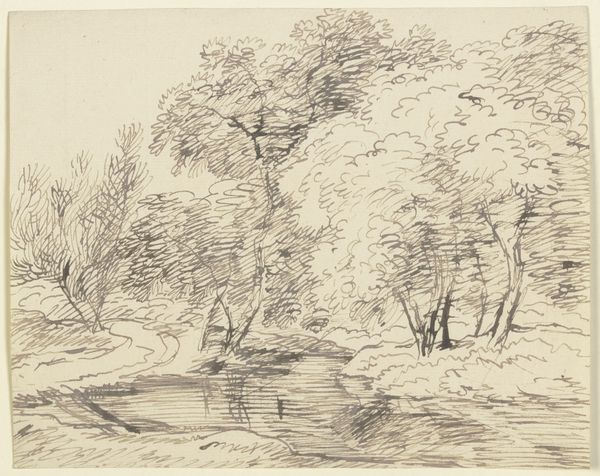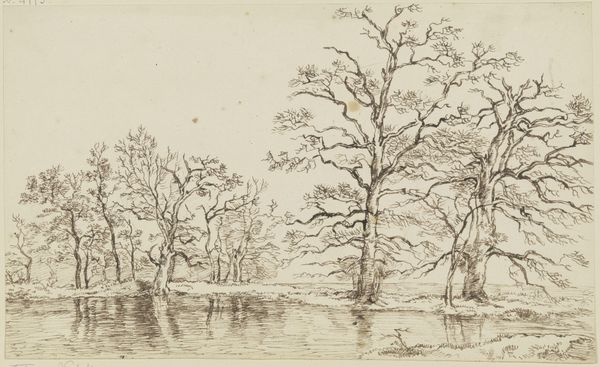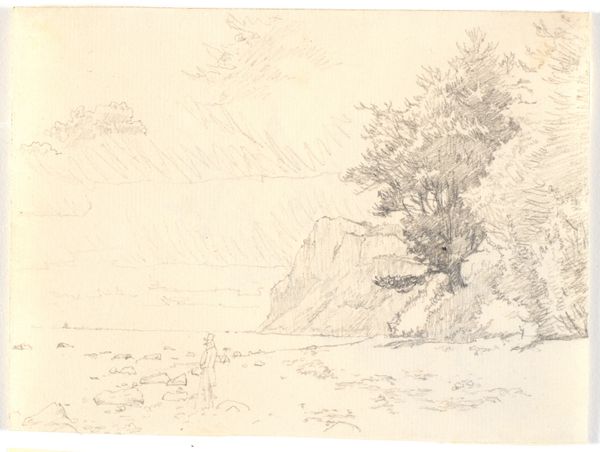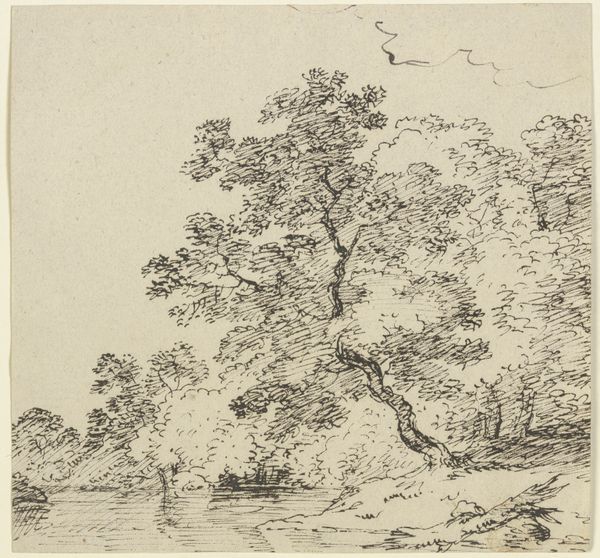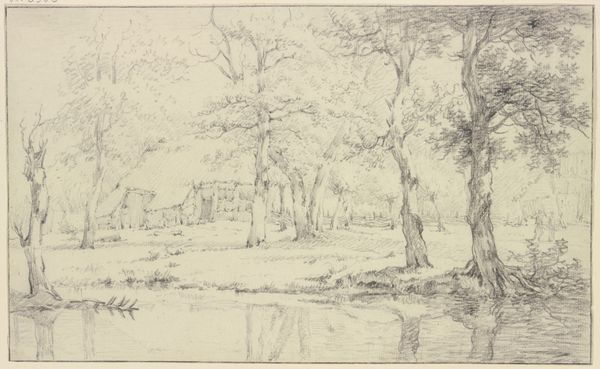
drawing, pencil
#
drawing
#
landscape
#
romanticism
#
pencil
Dimensions: overall: 20 x 29.4 cm (7 7/8 x 11 9/16 in.)
Copyright: National Gallery of Art: CC0 1.0
Curator: This is "The River at Llangollen," a pencil drawing completed around 1795 by the English artist John Glover. Editor: Instantly, I feel this kind of quiet, almost melancholy stillness looking at it. It's delicate, ghostly even. You can almost hear the gentle lapping of the water. Curator: Glover's work, even in seemingly simple sketches like this, often engaged with larger Romantic ideals regarding the sublimity of nature, a refuge from industrial modernity that also had some complicated politics, often dispossessing locals in pursuit of these Romantic ideas of freedom. Editor: Complicated is right. I’m just thinking about the reflections in the water here, that sense of mirroring. It is almost like nature contemplating itself. And this really dense foliage contrasted with the flat paper that forms the open sky. Are you supposed to think of freedom and the sublime here or… enclosure? Curator: That tension between idealization and the realities of land use and ownership was central to the cultural landscape of the time, with many artists like Glover having made fortunes because of their works. Picturesque art provided both a symbolic escape and a reinforcement of prevailing social hierarchies. Editor: So you're saying art helped pretty things up but didn’t solve the actual problems. You can see, there's something fragile about how it's rendered. Makes you think that kind of vision of nature is probably always already slipping away. It's beautiful but somehow...doomed. Curator: Exactly, the seemingly innocent rendering carries a substantial weight of ideology and social reality. Glover would eventually leave England, emigrating to Tasmania, disillusioned with the social and political situation, actually. Editor: Huh. Makes you look at it a little differently, right? Almost like a memento. It is a nice reminder though that our relationship with the landscape is not passive and it certainly has consequence, personally, and for society. Curator: Precisely. These serene scenes served as more than just pleasing images; they reflected the changing social, political and economic landscape of the late 18th century. Editor: So, peaceful at first glance, but with a quiet storm brewing underneath. Lovely and sad at the same time.
Comments
No comments
Be the first to comment and join the conversation on the ultimate creative platform.

